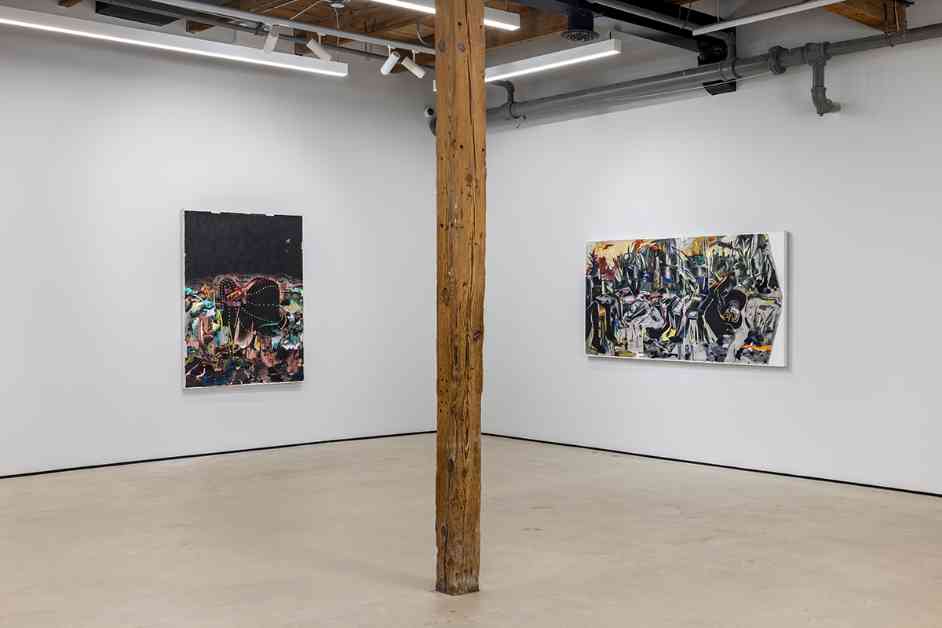In Leasho Johnson’s artwork, “The Sea Is Another Country,” a figure is depicted in a Black oceanic landscape, reflecting on the traumas endured by enslaved Africans. The exhibition at Mariane Ibrahim showcases nine paintings that explore Blackness, queerness, and Caribbeanness. Johnson’s abstracted figures entangle themselves in lush landscapes, inviting viewers to escape the tyranny of meaning.
Growing up in Jamaica, Johnson’s queerness was often pushed to the corners due to the dominance of Protestantism. His artwork, like “The Centipede Under Two Skies (Anansi #27),” reflects on his experiences and memories from Jamaica, transitioning from clarity to darkness and wilderness. Johnson’s interest in Anansi stories deepened when he arrived in Chicago, where he had to choose between aligning with white hegemonies or an obscured narrative from the African diaspora.
Johnson’s paintings merge natural materials like charcoal, indigo, and logwood dye with oil paint and gold flakes. Logwood dye, historically used for its black color, becomes unstable when mixed with other substances, reflecting the complexities of identity. His works like “Like a Deep Breath Held and Held” and “Set Adrift, Aimless, Hopeless and Destructive” explore themes of intimacy and self-awareness by the water.
While the Caribbean Sea symbolizes wildness and impermanence, Johnson now resides in Chicago, adapting to the controlled bodies of water like Lake Michigan. His artwork reflects on the impact of natural disasters in the Caribbean and the relationship people have with water. Despite initially resisting calling Chicago home, Johnson now feels chosen by the city and its resources.
In a world where medical mistreatment and patriarchal misdiagnosis prevail, artists like Cheri Lee Charlton are shedding light on the devastating consequences. Documentaries like “Landscapes From Under the Rubble” highlight the struggles artists endure under occupying forces. Through exhibitions like “Just Below the Surface,” LGBTQ+ histories are brought to the forefront, amplifying voices that need to be heard.
As artists like Tyanna J. Buie use AI to reinterpret family legacies and Diana Solis and Patric McCoy document LGBTQ+ joy, the art world continues to evolve. Tali Halpern’s large fiber works represent grand ambitions, while Alberto Ortega Trejo’s unsettling solo show challenges viewers to confront foreboding themes. These artists push boundaries and spark conversations, contributing to the rich tapestry of arts and culture.

Embracing Wildness: A Guide to Chicago’s Natural Spaces
452

